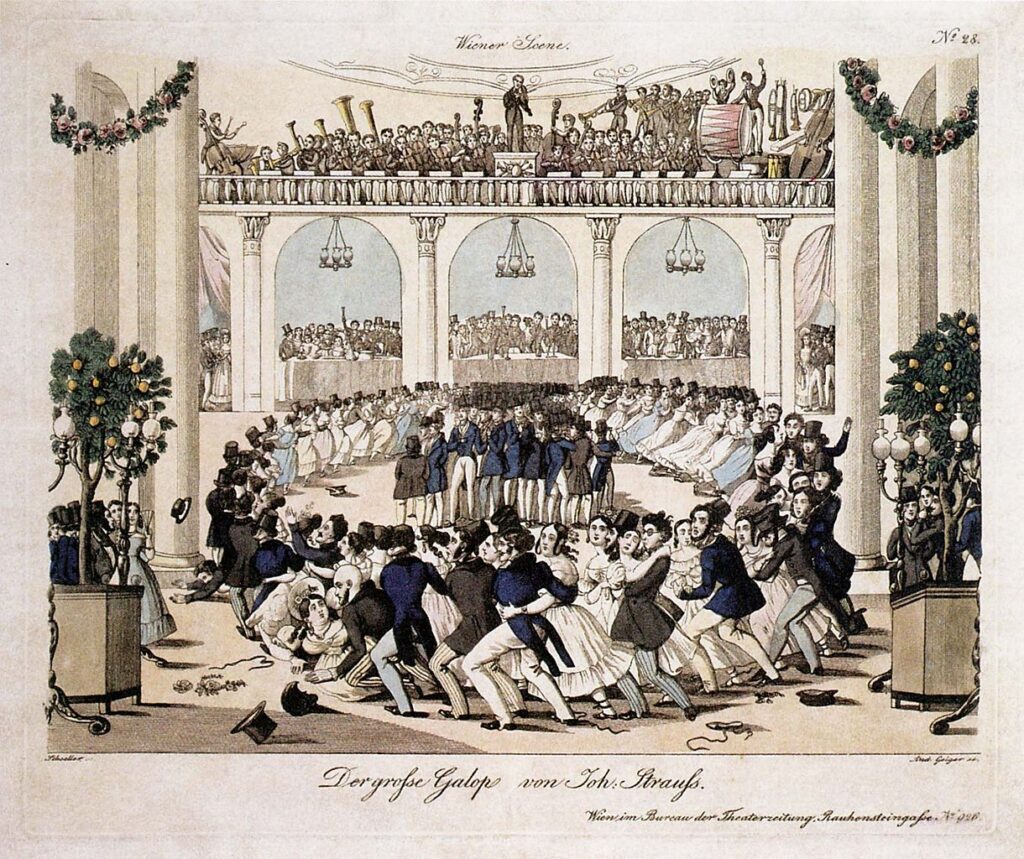Shostakovich, Galop
The galop was a popular ballroom dance in the 19th century that took its name, as you might expect, from the galloping of horses. It was fast and furious. Galops tended to be short, lasting only a couple of minutes, since otherwise they would exhaust the dancers. Couples held onto each other in a manner similar to the waltz but faced in the same direction as they raced around the room. The dance would often serve as a finale to a ball, which kind of makes sense.
We noted in an earlier Performance Pick that Rossini’s William Tell Overture was in the form of a galop, which of course made it a perfect accompaniment for the Lone Ranger to race across the Western landscape. Other prominent 19th-century composers produced galops, including Schubert, Liszt, and Bizet.
Russians in the 20th century took up the galop. Examples include Prokofiev’s Cinderella, Khachaturian’s Masquerade, and Kabalevsky’s The Comedians. Dmitri Shostakovich (1906-1975) composed this galop as part of the satirical operetta Cheremushky (Черёмушки), translated as “bird-cherry trees.” Cheremushky was an actual district in Moscow with cheap housing, and the word came to refer generally to the housing projects built in an attempt to overcome the Soviet housing shortages. The work premiered in 1959.
Shostakovich also used the galop as the finale to his Sixth Symphony, which we featured earlier.




